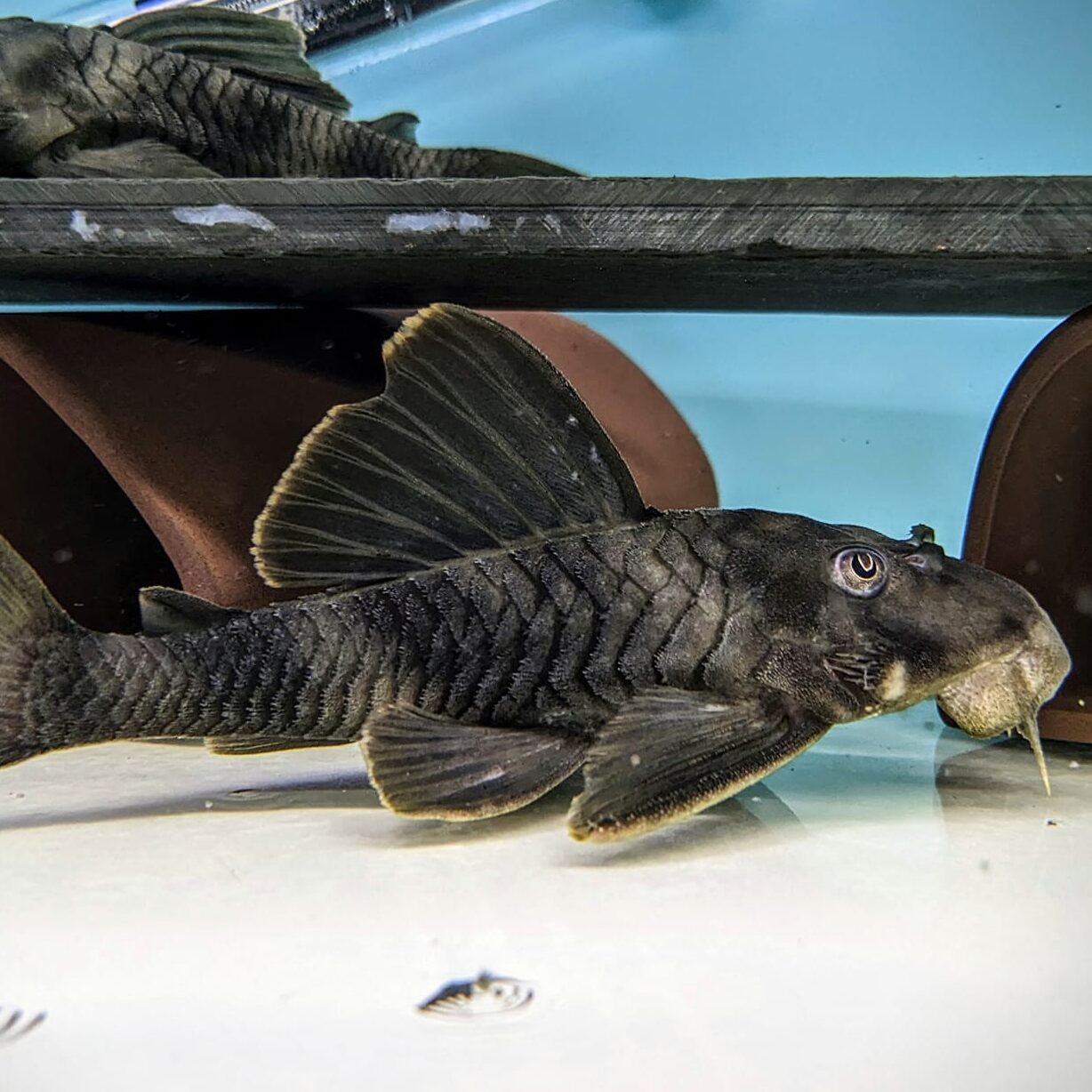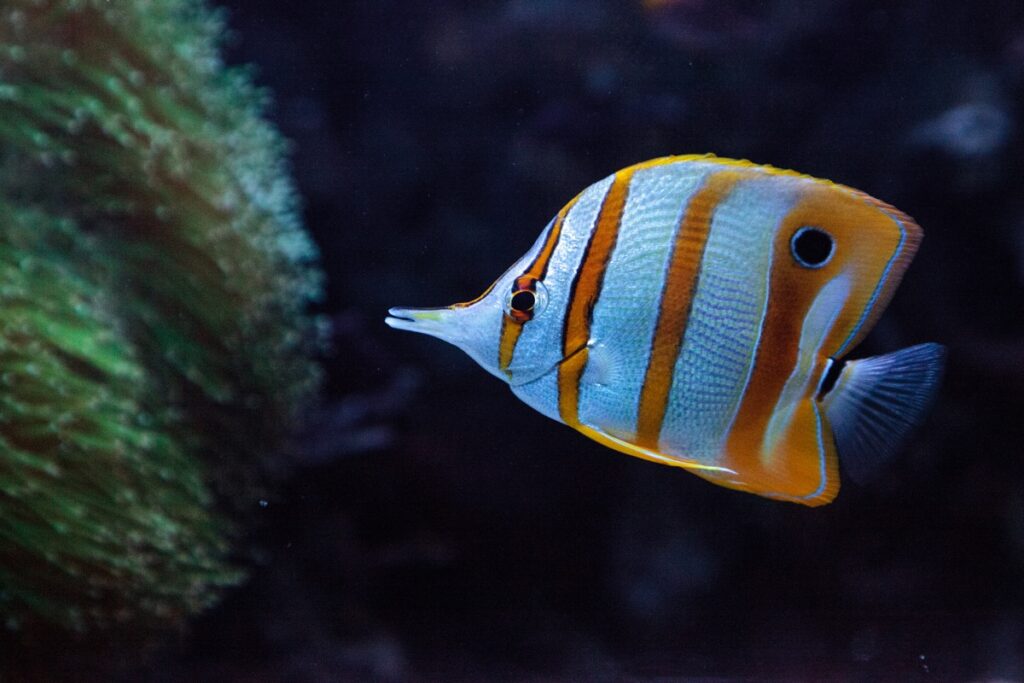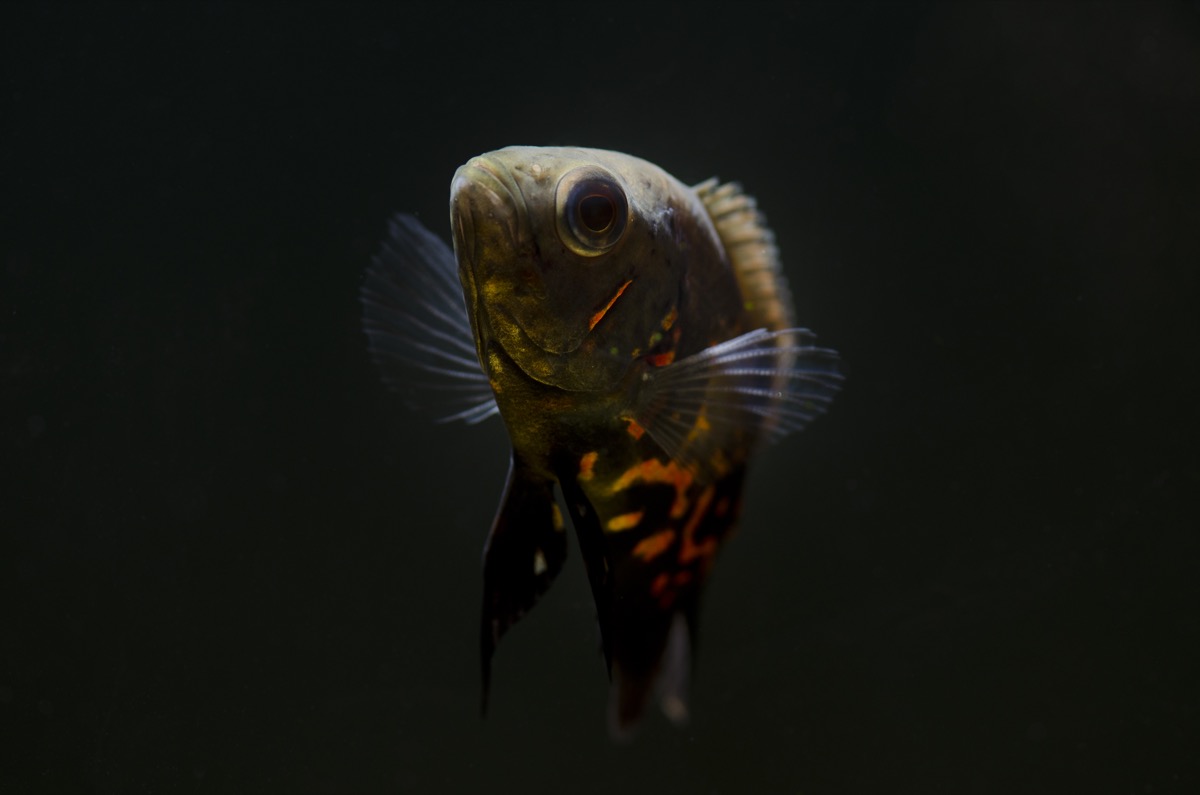Your basket is currently empty!
Description
The Spotted Gar (Lepisosteus oculatus) is a distinctive and ancient freshwater fish known for its elongated, torpedo-like body and striking pattern of black spots on a light, olive-green or tan background. Native to the slow-moving rivers, lakes, and swamps of North America, from the Mississippi River Basin to the Great Lakes, the Spotted Gar is a fascinating fish with a prehistoric look that dates back to the Cretaceous period. Though they have become a popular choice for experienced aquarists due to their unique appearance, their size and predatory nature make them best suited for large aquariums and experienced fishkeepers.
Appearance
The Spotted Gar is notable for its long, cylindrical body, with a mouth shaped like a beak, lined with numerous sharp teeth. Its coloration ranges from greenish to olive-brown, and it is covered in irregular black spots that extend along the body, head, and fins. These spots provide excellent camouflage in natural habitats. In captivity, they can reach lengths of 18 to 24 inches (45–60 cm), but in the wild, they can grow over 3 feet (90 cm). The Spotted Gar has thick, diamond-shaped ganoid scales, which give it a rugged and armored appearance, reminiscent of a bygone era in fish evolution.
Habitat and Tank Requirements
Spotted Gars inhabit calm, slow-moving waters with ample vegetation in the wild, where they can ambush prey while remaining hidden. In captivity, they need a spacious tank with a minimum of 180 gallons for juveniles, but ideally over 300 gallons for adults, given their size and activity level. They do best in a setup that mimics their natural habitat, with open swimming areas, places to hide, and subdued lighting.
Tank Setup
Substrate: Sand or fine gravel to avoid damage to their sensitive skin.
Décor: Use driftwood, rocks, and hardy plants to create hiding spots, though keep open swimming areas as Spotted Gars are active swimmers.
Water Quality: They are fairly hardy but need clean, well-filtered water with stable parameters.Temperature: 68°F to 80°F (20°C to 27°C)
pH: Neutral to slightly alkaline, around 6.5 to 8.0
Water Hardness: Moderate to hard
Diet and Feeding
Spotted Gars are predatory carnivores with a diet focused on live or frozen foods. In the wild, they prey on fish, amphibians, and invertebrates. In captivity, they can be fed live foods such as feeder fish, shrimp, and crayfish, although some will adapt to frozen foods like silversides or krill. Care should be taken to avoid overfeeding, as these fish are prone to obesity and related health issues. Feeding them every other day is generally sufficient, especially as they grow older and their metabolism slows.
Temperament and Compatibility
While Spotted Gars are not highly aggressive toward tank mates, they are opportunistic hunters and will eat any fish or invertebrate small enough to fit into their mouths. Therefore, they should only be housed with larger, robust tank mates such as larger cichlids, bichirs, or other large, predatory fish. Avoid keeping them with smaller species or fish that may provoke aggression.
Lifespan and Care
With proper care, Spotted Gars can live 10 to 20 years in captivity. They are relatively hardy but sensitive to poor water quality and fluctuating parameters. Due to their predatory behavior and tendency to leap, it’s essential to have a secure tank lid, as they may attempt to jump out of the aquarium if startled. Regular water changes and a high-quality filtration system are necessary to manage waste from a large, protein-rich diet.
Special Considerations
Tank Size and Space: Spotted Gars require a large aquarium and plenty of space to move. Tanks with long, horizontal swimming areas are preferable over tall tanks.
Compatibility and Feeding Caution: They are highly predatory, so tank mates should be selected carefully to avoid predation. When feeding live prey, only use disease-free feeder fish to reduce the risk of introducing parasites.
Breathing and Behavior: Spotted Gars have a modified swim bladder that allows them to gulp air from the surface, enabling them to survive in low-oxygen environments. This unique adaptation makes them interesting to observe but also means that a secure tank lid is a must, as they can jump out when surfacing.
Breeding
Breeding Spotted Gars in captivity is uncommon due to their size and the specific conditions required. In the wild, they spawn in dense vegetation, where the female releases eggs that stick to plants. While there are limited reports of successful breeding in large public aquariums, it is not commonly achieved in home aquariums.
Final Thoughts
The Spotted Gar is a fascinating, prehistoric-looking fish that can bring a sense of the ancient world into a large aquarium. Their unique appearance, peaceful yet predatory nature, and intriguing behaviors make them a rewarding fish for advanced aquarists with the resources to provide a spacious, well-maintained environment. However, their large size, carnivorous diet, and tank requirements make them best suited to experienced keepers ready for a long-term commitment. With proper care and an appropriate setup, Spotted Gars can thrive and serve as a striking centerpiece in any large freshwater aquarium.











Reviews
There are no reviews yet.